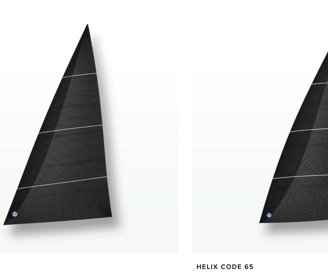
The Ultimate Guide to Catamaran Sails
Various sails used on catamarans and a curated list of top-quality sail manufacturers.
Sailing on a catamaran is a thrilling experience, and the key to harnessing the wind's power lies in understanding the different types of sails. This article will delve into the various sails used on catamarans and provide a curated list of top-quality sail manufacturers, complete with their contact details and websites.
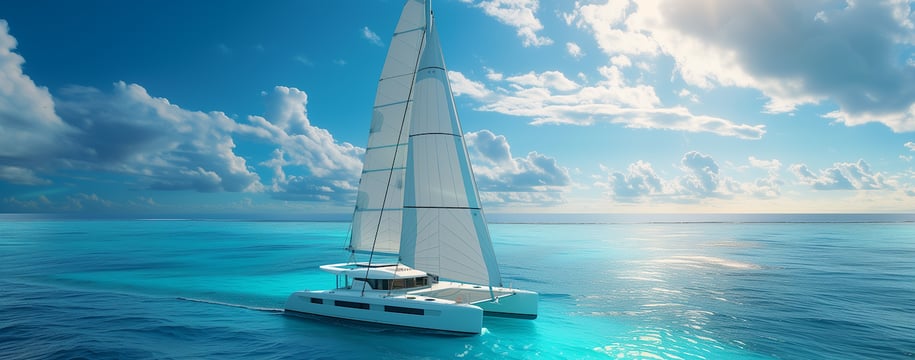

1. Mainsail
The primary sail on a catamaran, attached to the mast and boom. It provides the main driving force and is crucial for maneuverability.
Let's delve deeper into the mainsail of a catamaran, exploring its various aspects such as sizes, qualities, colors, and different configurations like fully battened, in-mast, or furling sails.
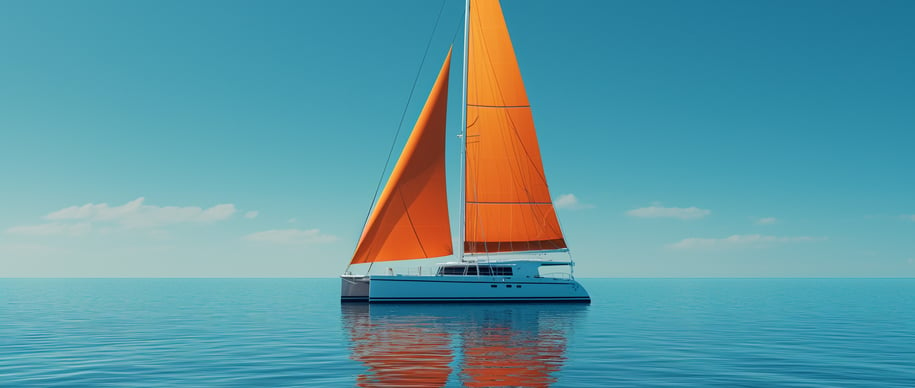

Sizes
Mainsails for catamarans come in various sizes to accommodate different sailing conditions and preferences. Common variations include:
Standard Mainsail: Typically used for cruising, it offers a balanced performance across various wind conditions.
Full Batten Mainsail: Featuring additional horizontal battens, this design enhances sail shape, providing better performance, especially in light winds.Qualities
The quality of a mainsail is crucial for durability, performance, and handling. Key qualities to consider include:
Material: High-quality sails are often made from durable materials like woven polyester, laminated fabrics, or even advanced materials such as aramid fibers for enhanced strength and lightness.
Construction: Triple-stitched seams, reinforced corners, and durable stitching contribute to a mainsail's longevity and performance.Colors
While the color of a mainsail doesn't significantly affect its performance, it can impact aesthetics and visibility. Common mainsail colors include white, off-white, or light shades, as they are less prone to fading and allow for better visibility of telltales and sail trim.
Fully Battened Mainsail:
Fully battened mainsails feature battens that extend the full width of the sail, providing several advantages:
Improved Sail Shape: Battens help maintain a better sail shape, especially in heavy winds.
Reduced Flogging: Fully battened mainsails are less prone to flogging, contributing to a quieter and more comfortable sailing experience.
Enhanced Durability: Battens distribute loads more evenly, contributing to increased sail longevity.

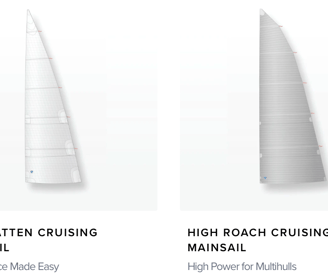
In-Mast and Furling Mainsails:
In-Mast Mainsail: This design allows the mainsail to be housed within the mast, providing convenience and ease of use. However, some sailors argue that it may sacrifice some performance compared to traditional mainsails.
In Boom Furling Mainsail: Furling mainsails are rolled around the boom for easy deployment and reefing. They are popular for cruising catamarans, offering simplicity and reduced effort when adjusting sail area.
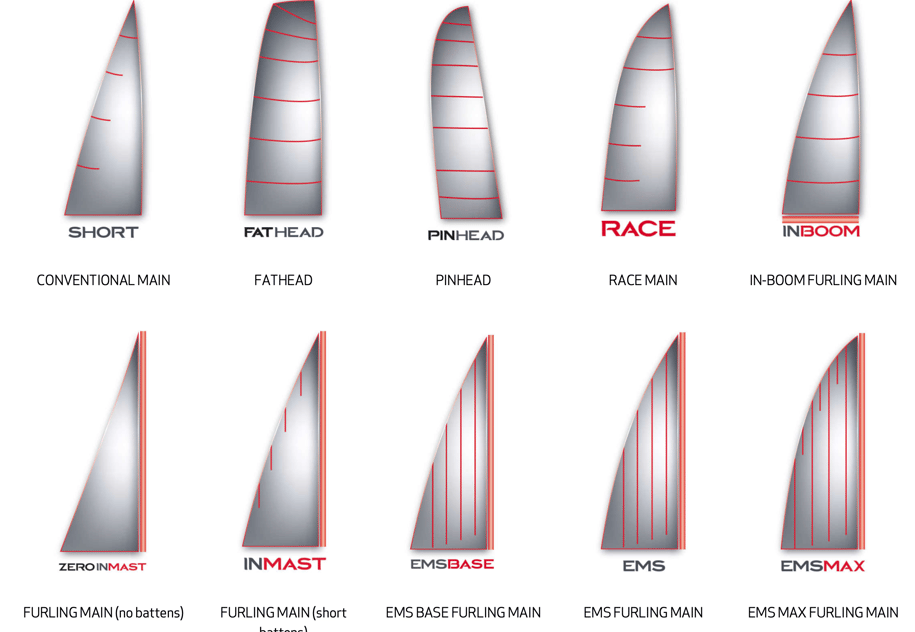

Choosing the right mainsail configuration depends on your sailing style, preferences, and the intended use of the catamaran. Whether opting for a standard, fully battened, in-mast, or furling mainsail, selecting a high-quality sail tailored to your needs will enhance your sailing experience and performance on the water.
2. Jib/Genoa
Located at the front of the catamaran, these sails contribute to balance and speed. The jib is smaller, while the genoa is larger, enhancing performance in different wind conditions.
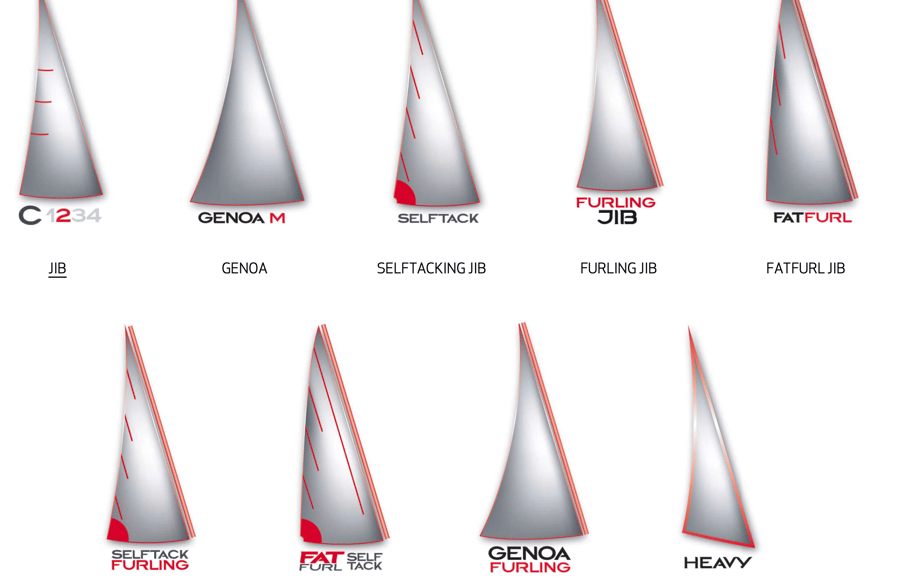

Sizes of Jib Sails:
Jib sails for catamarans come in various sizes to accommodate different wind conditions and sailing styles. Common sizes include:
Working Jib: This is a smaller jib designed for use in moderate wind conditions. It provides good maneuverability and is suitable for cruising.
Genoa: Genoas are larger jibs that enhance a catamaran's performance, especially in light winds. They come in various sizes, with a higher number indicating a larger sail. For example, a 150% genoa is larger than a 100% genoa.
Qualities of Jib Sails:
The quality of a jib sail is essential for performance, durability, and handling. Consider the following qualities when choosing a jib sail:
Material: High-quality jib sails are typically made from durable materials such as woven polyester, laminated fabrics, or advanced materials like Mylar for increased performance.
UV Protection: UV-resistant materials help protect the jib from sun damage, extending its lifespan.
Reinforcements: Reinforced corners, triple-stitched seams, and quality stitching contribute to the overall strength and durability of the jib sail.
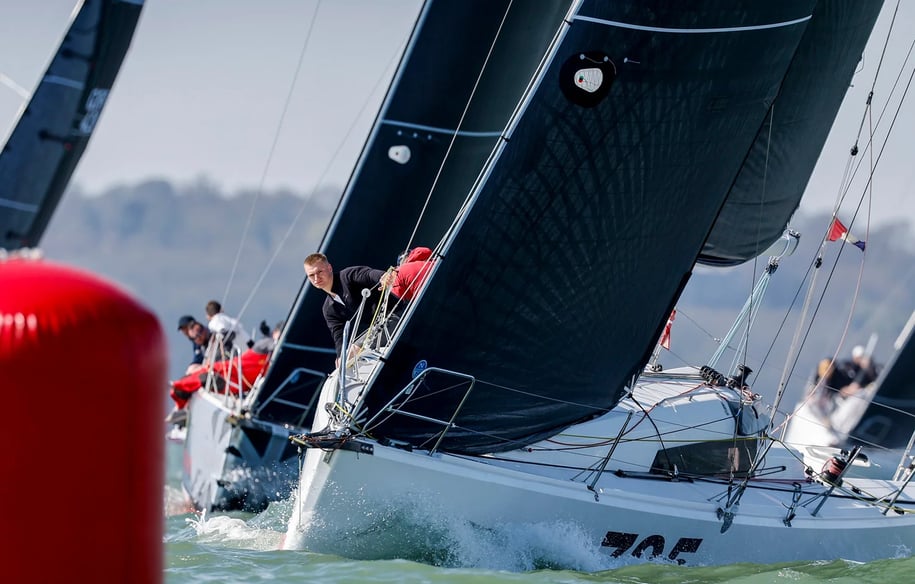

Colors of Jib Sails:
While the color of a jib sail is primarily an aesthetic choice, it can impact visibility and heat absorption. Common jib sail colors include:
White or Light Shades: These colors are popular for jib sails as they reflect sunlight, reducing heat absorption and potential damage.
Colored Trim: Some sailors opt for colored trim or UV protection strips on the edges of the jib for added visibility and a personalized touch.
Choosing the right size and quality of the jib sail depends on your sailing preferences, the typical wind conditions in your sailing area, and whether you prioritize performance or ease of handling. A well-maintained and appropriately sized jib sail will enhance the catamaran's overall sail plan, providing a balanced and enjoyable sailing experience.
3. Spinnaker
A large, colorful, and lightweight sail used for downwind sailing. It's perfect for maximizing speed in optimal wind conditions.

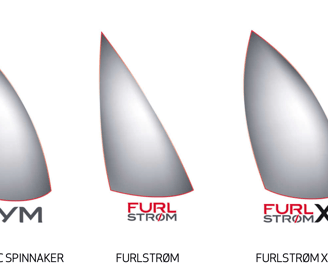
Sizes of Spinnaker Sails:
Spinnakers for catamarans come in various sizes, each designed for specific wind conditions and sailing purposes. Common spinnaker sizes include:
Asymmetric Spinnaker: A versatile and easy-to-handle spinnaker suitable for reaching and running. It comes in different sizes, typically designated by their area in square meters or feet.
Symmetric Spinnaker: A classic spinnaker with a symmetrical shape, best suited for downwind sailing. Sizes are also specified by their area.
Qualities of Spinnaker Sails:
The quality of a spinnaker sail is crucial for optimal performance, durability, and ease of handling. Consider the following qualities when choosing a spinnaker:
Material: High-quality spinnakers are often made from lightweight, durable materials such as nylon or other synthetic fabrics. Some racing spinnakers may use more advanced materials like Mylar for increased performance.
Design: The design of a spinnaker influences its performance in different wind angles. Asymmetric spinnakers are easier to handle and suitable for various wind angles, while symmetric spinnakers excel in downwind conditions.
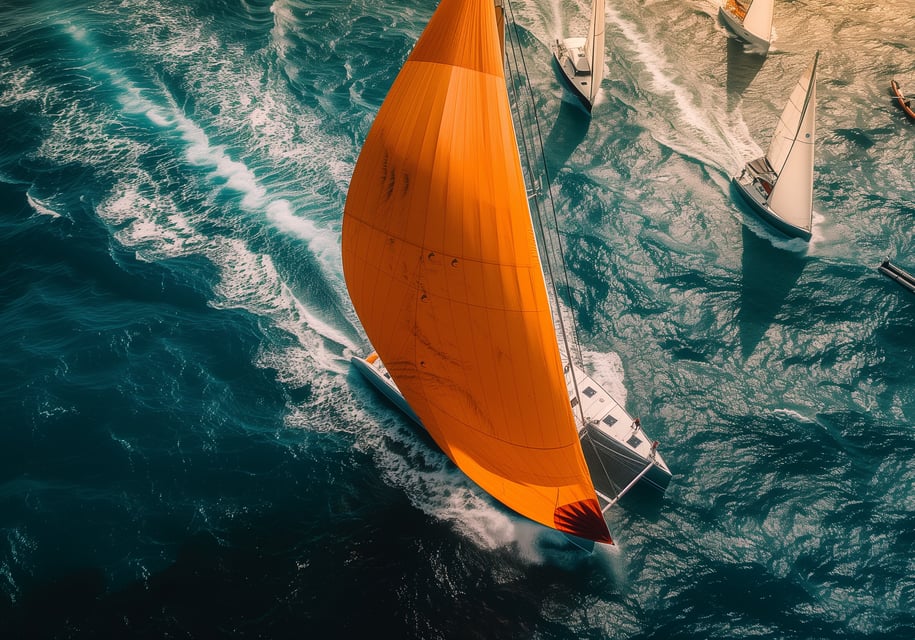

Colors of Spinnaker Sails:
Spinnakers offer a canvas for vibrant colors and designs, making them a visually striking addition to a catamaran's sail inventory. Common spinnaker colors include:
Bold and Bright Hues: Spinnakers often feature bold colors such as red, blue, yellow, or a combination of vibrant shades. Bright colors enhance visibility and add a dynamic visual element to sailing.
Custom Designs: Some sailors opt for custom-designed spinnakers with unique patterns, logos, or sponsor branding.
Choosing the right size and quality of the spinnaker depends on your sailing goals, experience level, and the prevailing wind conditions in your sailing area. Whether you're looking for a versatile asymmetric spinnaker or a classic symmetric design, investing in a high-quality spinnaker will elevate your catamaran sailing experience, especially when cruising or participating in races.
4. Foresail:
Positioned forward of the mast, this sail aids in increasing the overall sail area, providing additional power.

